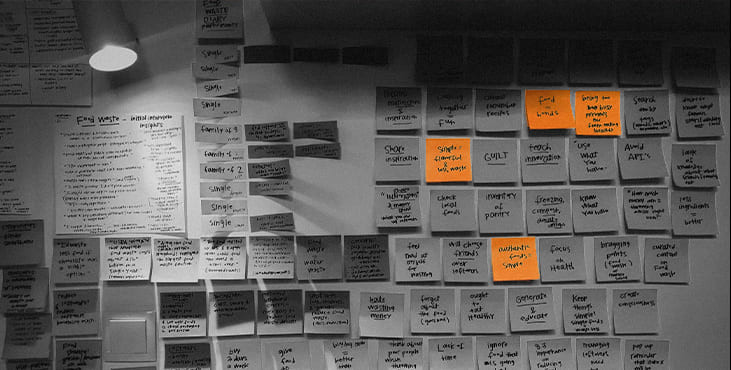
What can you use design thinking tools for?
Design thinking is the idea that we can solve problems by practicing human-centered design, putting people at the center of the problem-solving process.
The essence of the idea of design thinking is that we focus on a common goal, rather than talking about a specific problem that needs to be solved. While it can help us solve some of the world's toughest problems (like global warming), we can also use it every day in the web industry to help us solve our own tough problems.
For example, a product manager might come to you and say, "We need to improve our web traffic by 50% this month." The traditional way to solve this problem might be to increase your advertising spend, run a social campaign, or simply learn ways to increase traffic.
The design thinking approach to this problem is to ask why, it is possible that a 50% increase in traffic is expected to lead to an increase in the number of potential customers. Well, instead of abandoning the costly paid advertising process to increase traffic and leads, perhaps the best solution would be to increase the conversion rate of the traffic you already have.
What design thinking looks like in practice
AirBNB
A great example of design thinking in practice is the early days of AirBNB. Very early on, they realized that the apartment listings in their apartments tended to have poor quality photos, often from old camera phones. They believed that if more apartments had better photos, they would get more bookings.

So what did they do? They flew to New York (where most of the ads were), rented a camera, visited some of the users, and greatly improved the photo quality of those ads. Immediately they doubled their weekly income, the biggest improvement they've made in a long time.
How is design thinking? Well, AirBNB knew that it was impossible in the long run to be able to treat every user like this and fly to any destination. But knowing how important it is, they decided to use a short-term solution that didn't scale because if it worked, the result was overwhelmingly positive for the company.
Nordstrom
Another great example of design thinking in practice is the Nordstrom Innovation Lab. Nordstrom, a leading US retailer, has hired a team of people to analyze the data they have collected from sources such as Facebook, Pinterest and Twitter to create a customized experience for customers based on their preferences and in-store activity.
One of the actions they took was to go into a retail store and create an iPad app for sunglasses. Instead of taking the typical approach of gathering data, designing in their offices, and testing the product with users, they physically invited designers and developers into their store and set it up. This allowed them first-hand access to real customers (not recruited users for training) and meant they could test with real users every step of the way. Instead of research users having direct access to clients, project managers and developers also had access and ideas could be easily tested and validated by clients in real time as they developed the application.

This “lean” approach is central to design thinking. As with AirBNB, this idea doesn't necessarily scale as not everyone can go to a site and build an app using this method, but Nordstrom has used its resources to get closer to its customers and build something based on direct feedback that they received. Whether the app was running or not for long, their approach meant they needed to test something much faster than if they were using a more traditional design approach.
Why design thinking?
As in the examples above, it is clear that by applying design thinking we are solving real problems for our customers, rather than focusing solely on business goals. The idea of a small company with a small amount of money flying to New York to take a few photos may not have spread to many corporate boardrooms, but there is no doubt that this decision changed the direction of the company. Not everyone can go into stores and build apps on the fly, but adding an email field to collect user emails for a specific feature is doable.
Part of the good thing about design thinking is that we can look at problems differently, often rethinking problems, whereas the traditional approach may tend to prioritize the wrong things.
It also allows us to be flexible and economical. This means that instead of spending a lot of time building a product or website and then launching and seeing what happens, it allows us to build something smaller and launch sooner. Test, rotate if necessary. We analyze how we build a product without waiting for the end.
These benefits are endless. The design thinking approach means engaging users in the process. This not only provides better solutions, but also means that users feel like they are part of the process. They feel loved, as if they are truly cared for. This will make them more willing to forgive potential problems and, in turn, become promoters who will encourage their friends and others to use our products and websites. This effect is of course more commonly known as the halo effect.
Get a creative brand asset as a bonus
Tell us what you think
By clicking 'Submit', you agree to Privacy Policy and authorise our staff to contact you. You are liable under the Personal Data Protection Act if you key in false personal data or other people’s personal data.
offers and news
